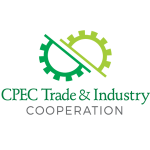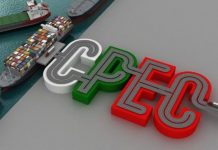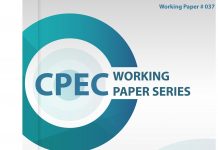Abstract
Pakistan economy is besieged on the export front for decades, which contributes to trade and current account deficits. Although the government has announced several industrialization policies in the past, but no significant change has been observed. But now, under China Pakistan Economic Corridor (CPEC) we have an opportunity to put the economy back on track. We are expecting some major structural shifts, through which we will overcome the basic bottleneck of the economy, such as infrastructure and power-shortages and will tap new potential areas like Gwadar deep-sea port development. The manufacturing sector will also experience a change because of industrial cooperation with China through the development of Special Economic Zones (SEZs) under the CPEC framework. SEZs are considered as the engines of growth through increased trade, widening export base, fast-track urbanization and other social privileges. To make the CPEC a success story for Pakistan, more than enough work is needed to identify the correct economic policies which can deliver in future.
This study was conducted in pursuit to identify different industries for their comparative potential payoffs and the latent comparative advantages (LCA) of Pakistan. These sectors have reached to potential growth in china but still can repay margins in Pakistan. We believe that this study will add significantly to the debate on the payoffs of CPEC to Pakistan economy.
Presented at: 33rd Annual General Meeting (AGM)/Conference, held on December 12-14, 2017, of Pakistan Society of Development Economists (PSDE), Pakistan Institute of Development Economics (PIDE).
Accepted for Publication at: “Pakistan Development Review” (PDR) and likely to be published in the up-coming volume (June 2018)
Keywords
CPEC, Economic Growth, Pakistan Economy, Special Economic Zones (SEZs), Growth Identification and Facilitation Framework (GIFF), Latent Comparative Advantage-LCA
Author Information
Adnan Khan is a Research Associate of Policy-Urban Developement, Centre of Excellence for CPEC, PIDE, Ministry of Planning, Development and Reforms Planning Commission of Pakistan, Islamabad, Pakistan, Email: adnan.khan@cpec-centre.pk, Website: www.cpec-centre.pk
Muhammad Ishtiaq is an Economic Analyst at State Bank of Pakistan and Muhammad Sohail is a Lecturer at National University of Modern Languages, Islamabad
Acknowledgement
This paper is presented in the 33rd Annual General Meeting of Pakistan Society of Development Economists (PSDE), Pakistan Institute of Development Economics (PIDE) and likely to be published in the up-coming volume (June 2018) of Pakistan Development Review (PDR).

 中文
中文 Urdu
Urdu












